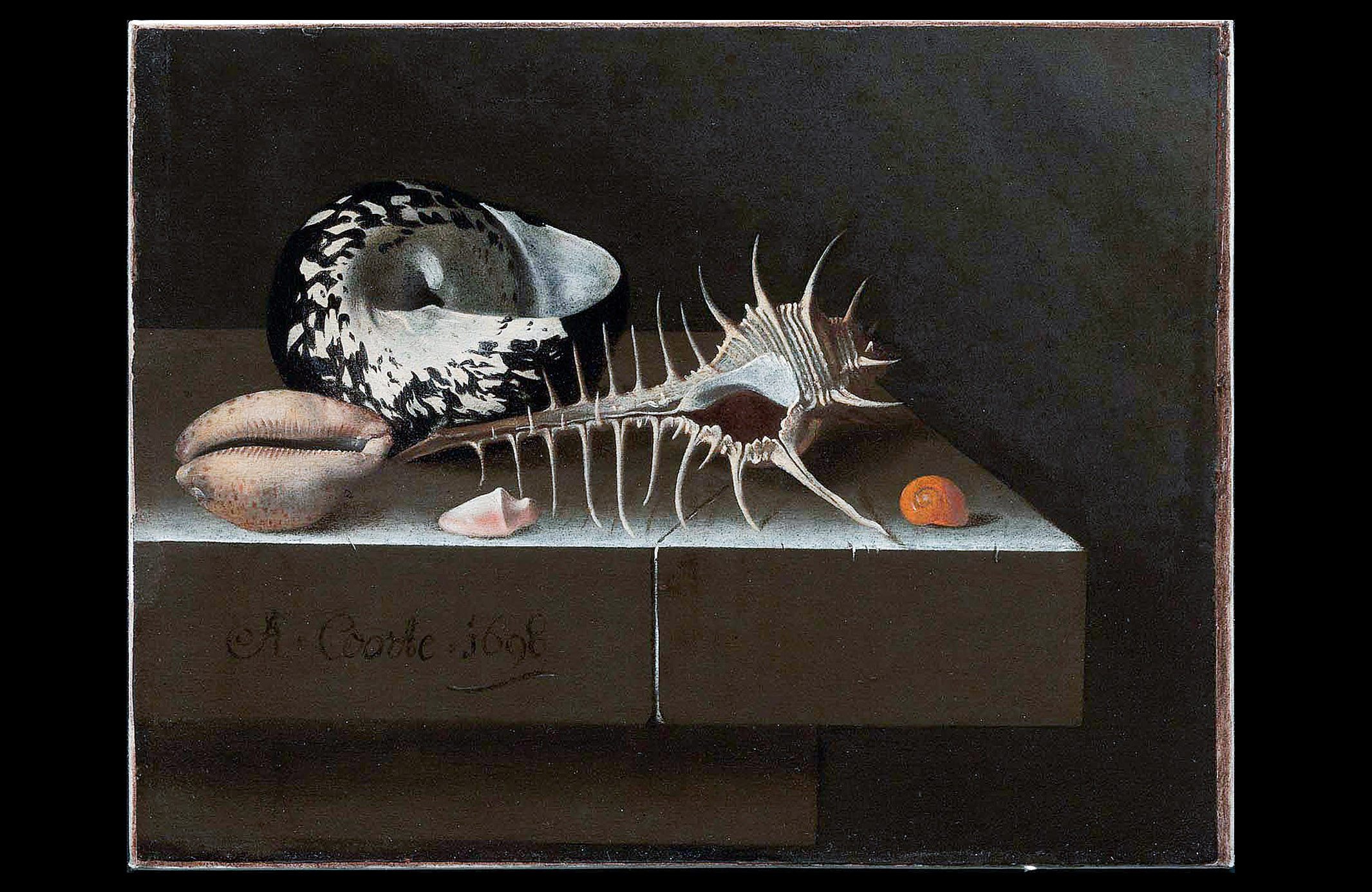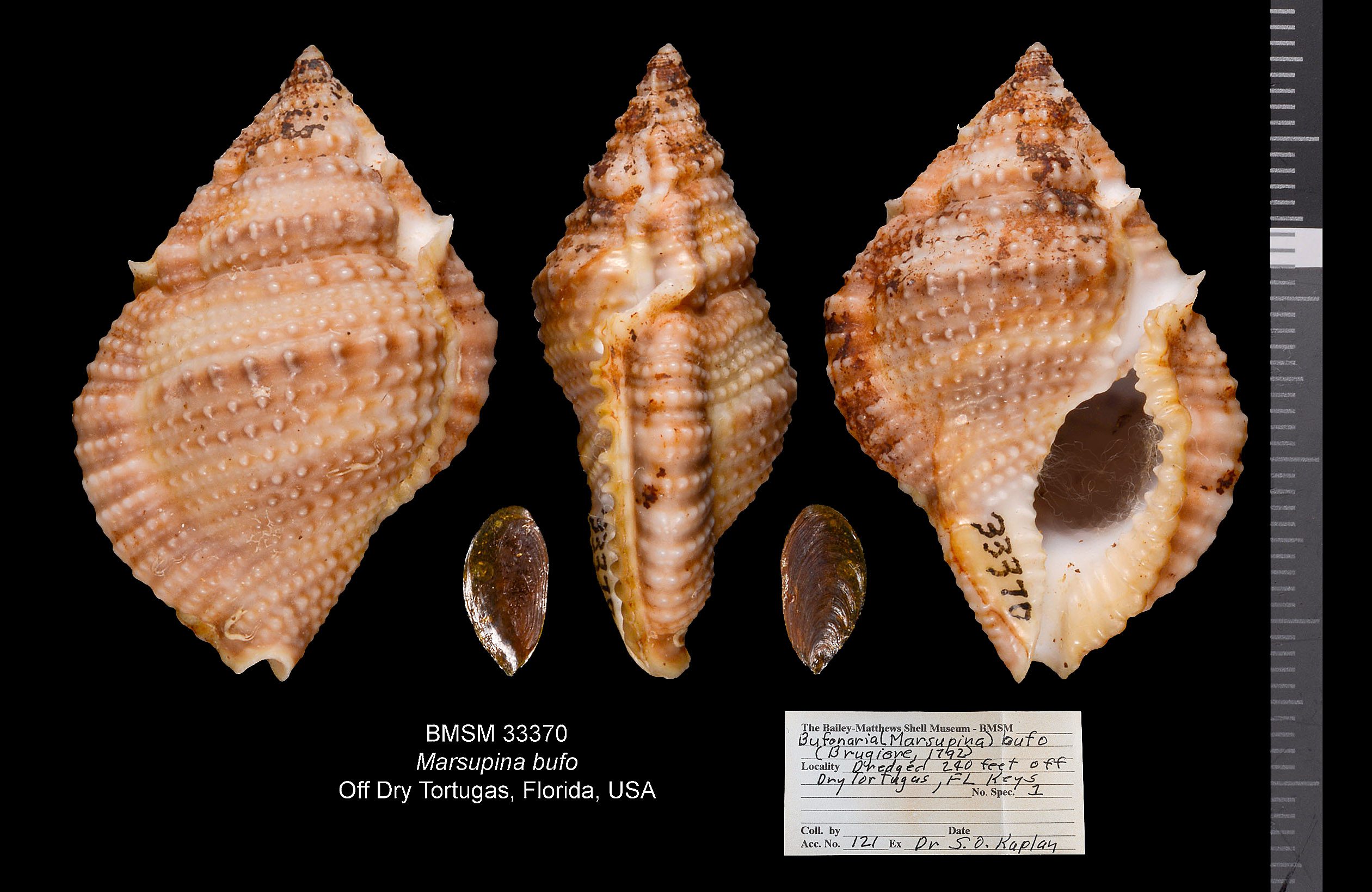The nacreous shell layer of Pen Shells imparts the trademark, dark iridescence that is so typical to the inner surface of Pen and other shells. The nacreous layer, or mother-of-pearl, is composed of thousands of very thin, flat, colorless, translucent calcium carbonate crystals (also known as tablets). These flat crystals cause incident light to scatter and reflect back at different angles, which is perceived as distinctive colors. The tablets are separated thin layers of organic “adhesive,” and this combination constitutes a strong, resilient, and lightweight composite material. Museum friend Dr. Peter Bush from the State University of New York at Buffalo recently visited Sanibel, taking home a shell of a local Stiff Pen Shell (Atrina rigida). In his lab, he examined the shell’s nacreous layer under a scanning electron microscope (SEM). The result is shown on the right. The SEM image shows the regular and parallel nature of the nacreous layer platelets. Due to the character of that technique, transparency of each layer is not evident in the final photos. The measurement units on the image are nanometers, with each nanometer representing 1/1000 of a micrometer, which in turn is 1/1000 of a millimeter.

The images show from left, valve of Stiff Pen Shell with nacreous layer present on narrower part of valve (photo by José H. Leal), and scanning electron micrograph of nacreous layer of same species (photo by Peter Bush).
#StiffPenShell #StiffPenShellanditsNacre #Nacre #tablets #Atrinarigida #nanometers


